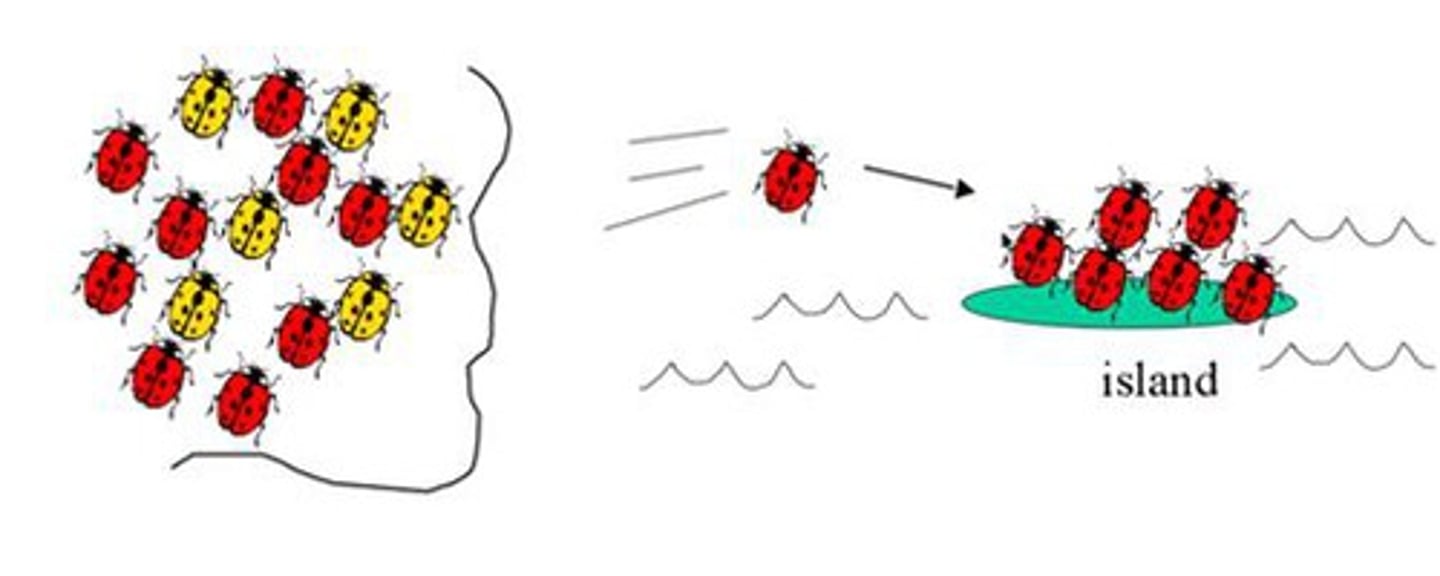10.E BIO, C1 Evolution As Genetic Change (PART E)
1/11
There's no tags or description
Looks like no tags are added yet.
Name | Mastery | Learn | Test | Matching | Spaced |
|---|
No study sessions yet.
12 Terms
Natural Selection on Single Gene Traits (Description)
Lead to changes in allele frequencies and thus to evolution
Natural Selection on Single Gene Traits (Example)
For example, a lizard population is normally brown, but has mutations that produce red and black forms; if red lizards are more visible to predators, they will be less likely to survive and reproduce. Therefore, the allele for red color will become rare; black lizards may warm up faster on cold days. This may give them energy to avoid predators; in turn, they may produce more offspring; the allele for black color will increase in relative frequency

Natural Selection Changes Allele Frequency
Small changes at the level of DNA can have large effects on populations in their environment; while mutations are random, evolution via natural selection is NOT a random process; individuals with certain alleles have a better chance of surviving and passing on their genes
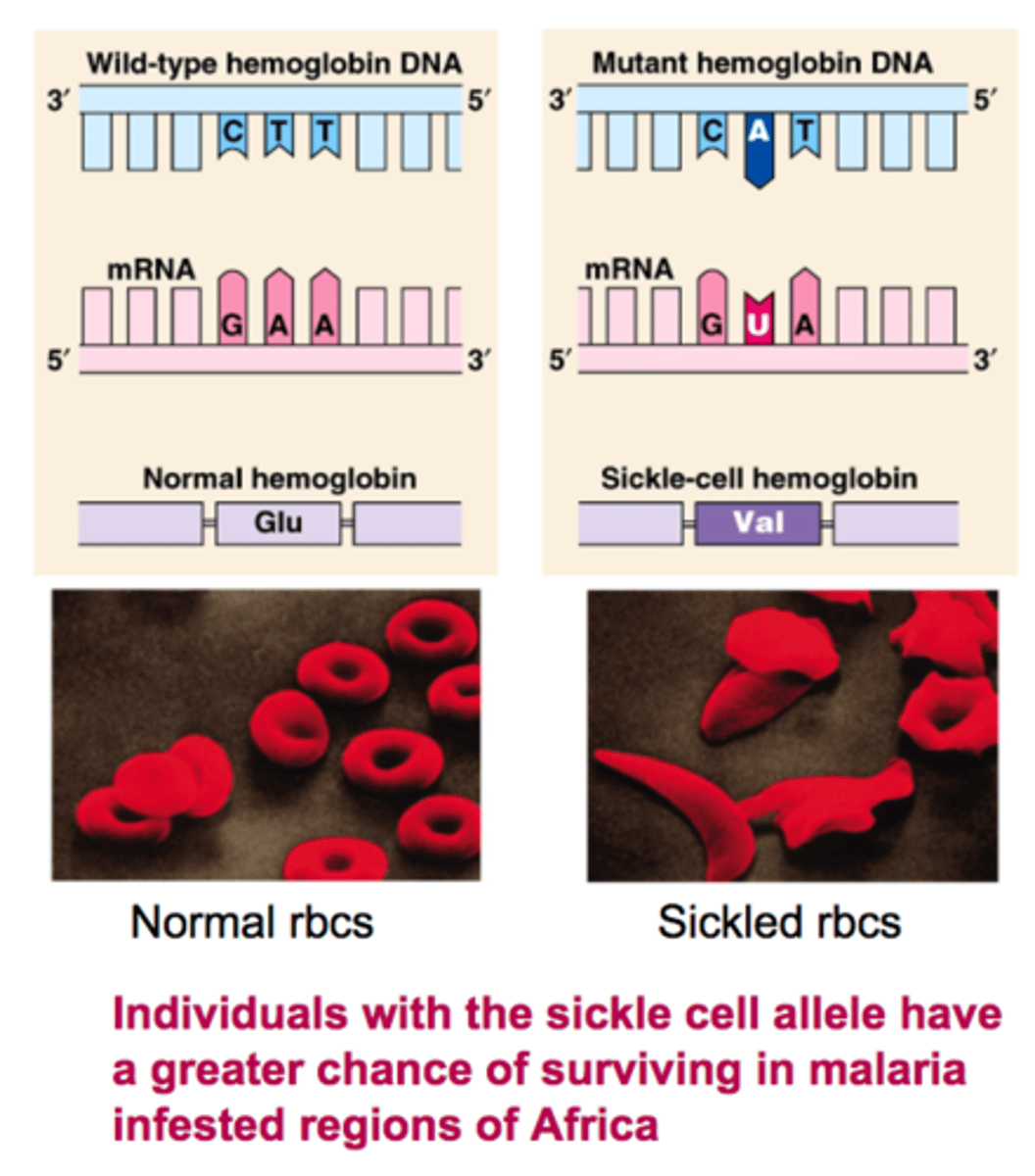
Natural Selection on Polygenic Traits (Examples)
Natural selection can affect the range of phenotypes and hence the shape of the bell curve in three ways:
- Directional Selection
- Stabilizing Selection
- Disruptive Selection
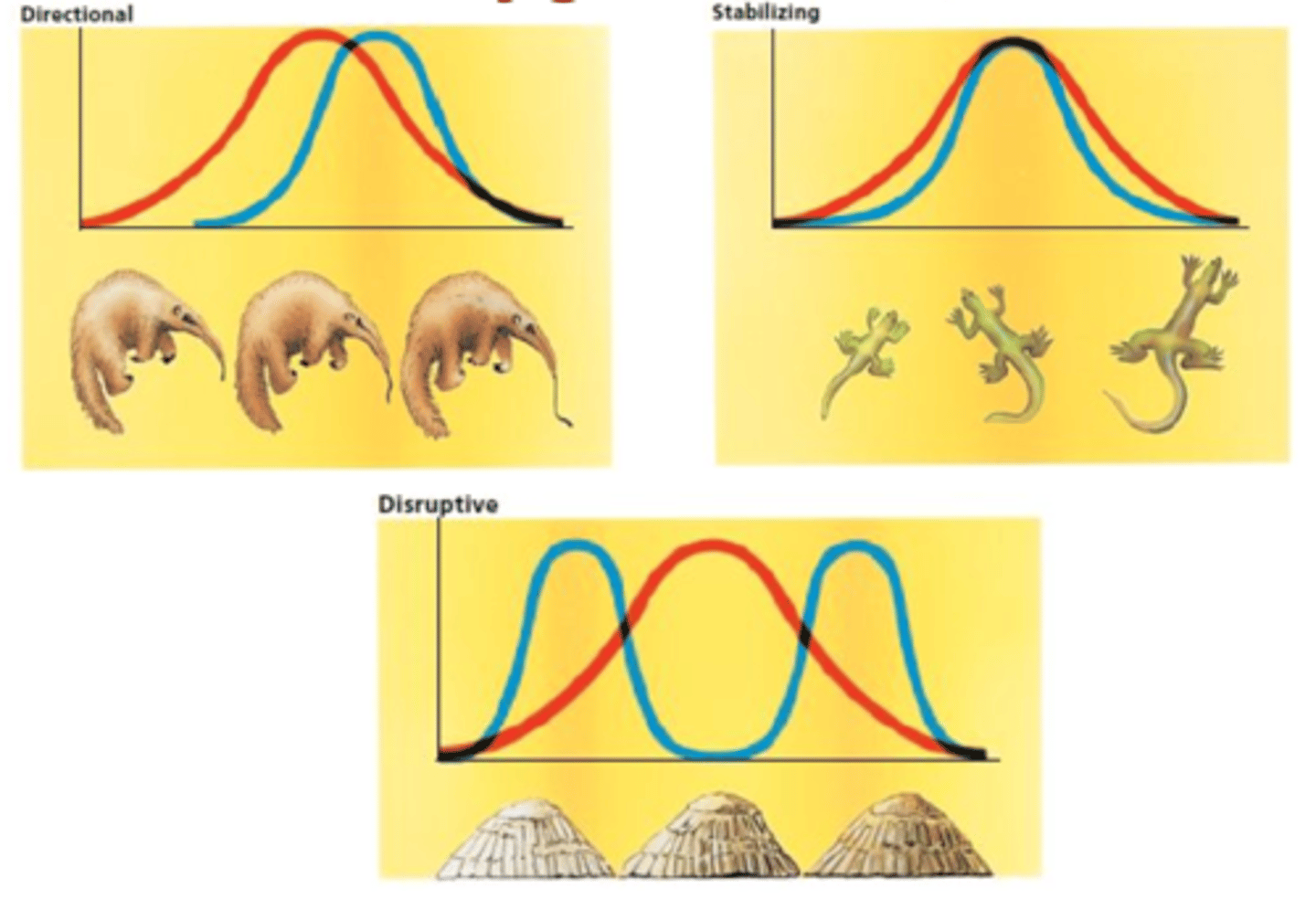
Directional selection
Occurs when individuals at one end of the curve have higher fitness than individuals in the middle or at the other end
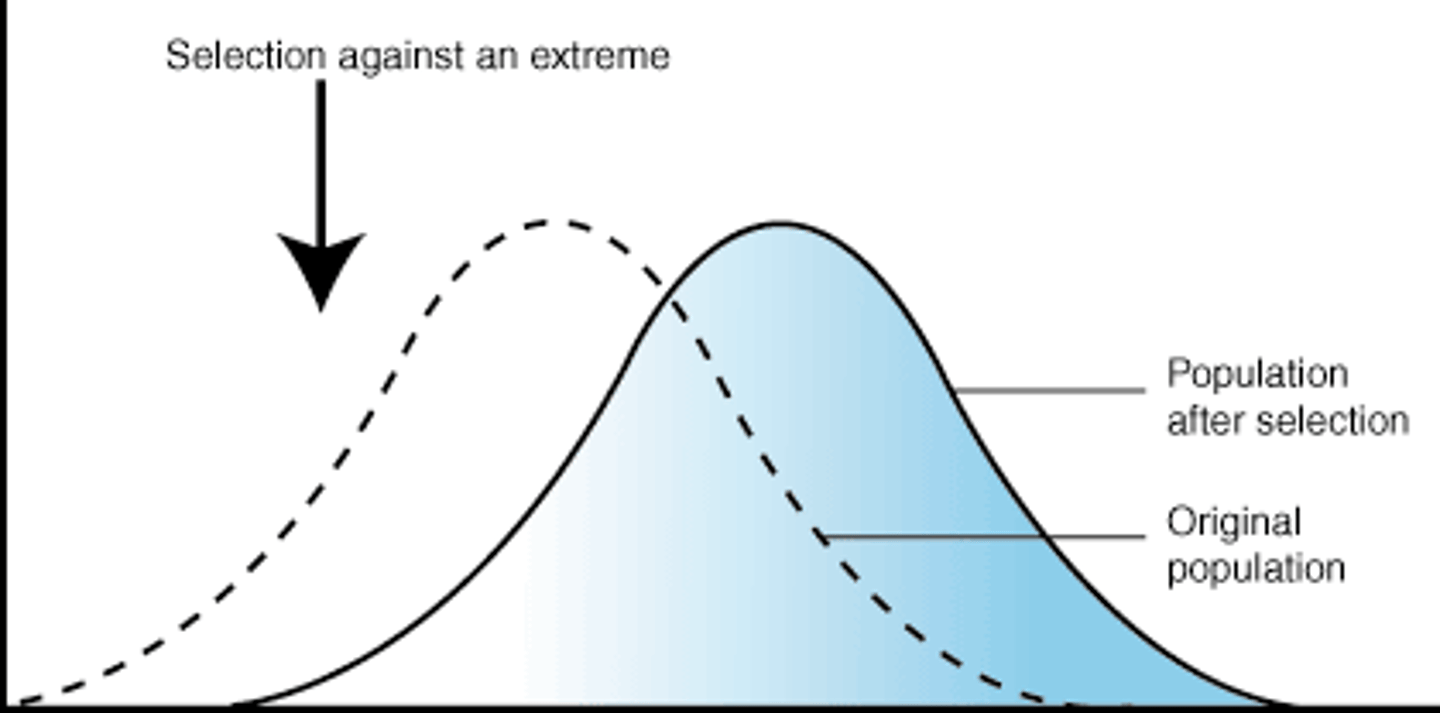
Stabilizing selection
Occurs when individuals near the center of the curve have higher fitness than individuals at either end of the curve →keeps the center of the curve at its current position, but it narrows the overall graph
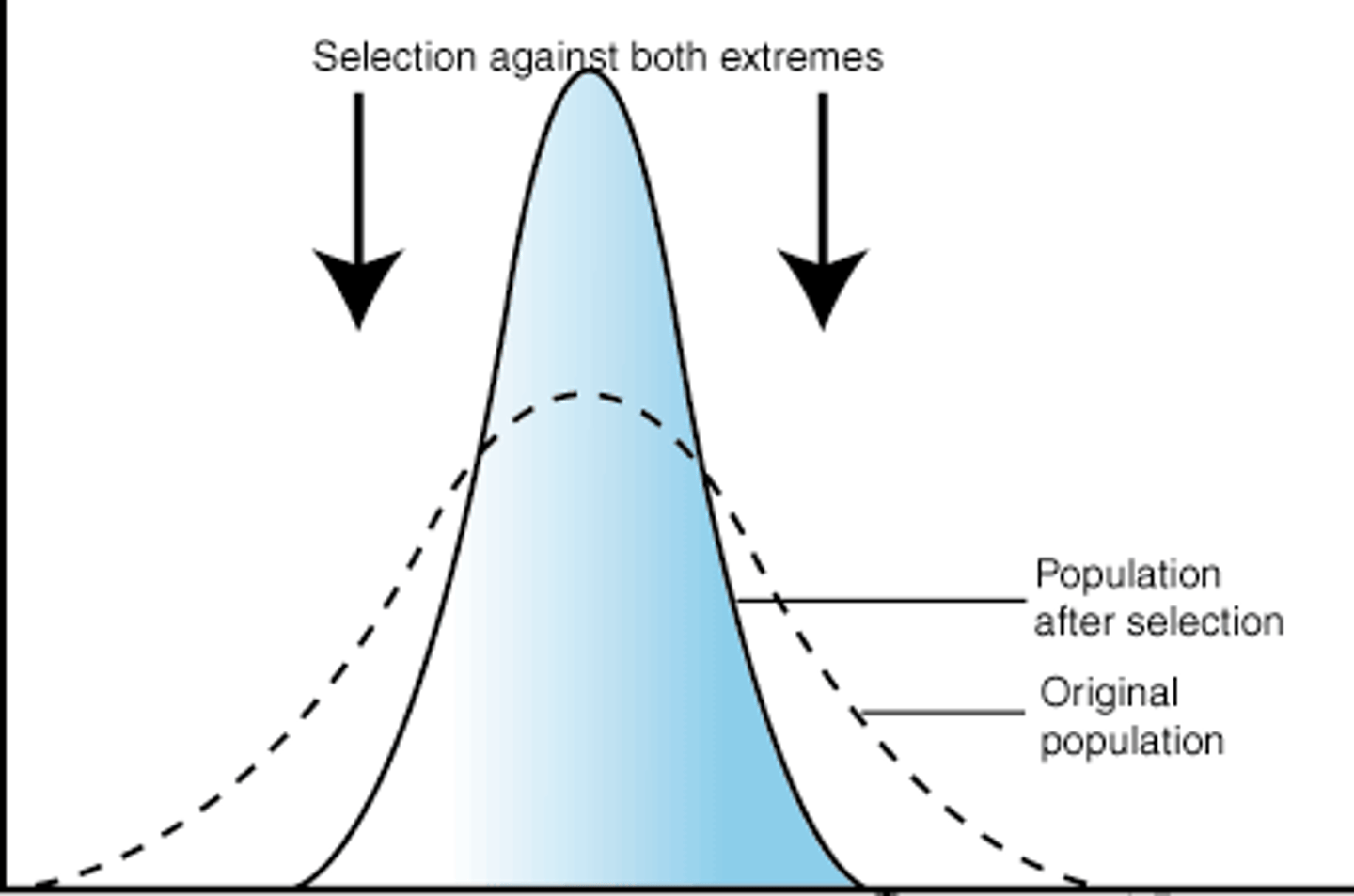
Disruptive selection
Occurs when individuals at the upper and lower ends of the curve have higher fitness than individuals near the middle

Hardy-Weinberg Principle
States that allele frequencies in a population will remain constant unless one or more factors cause them to change
Genetic equilibrium
A theoretical state that occurs when allele frequencies remain constant; results when:
- No net mutations occur
- Individuals neither enter or leave the population
- The population is large
- Individuals mate randomly
- Natural selection does not occur
Genetic drift
A change in allele frequency that occurs in small populations as a result of random change in allele frequency due to disaster, disease or isolation
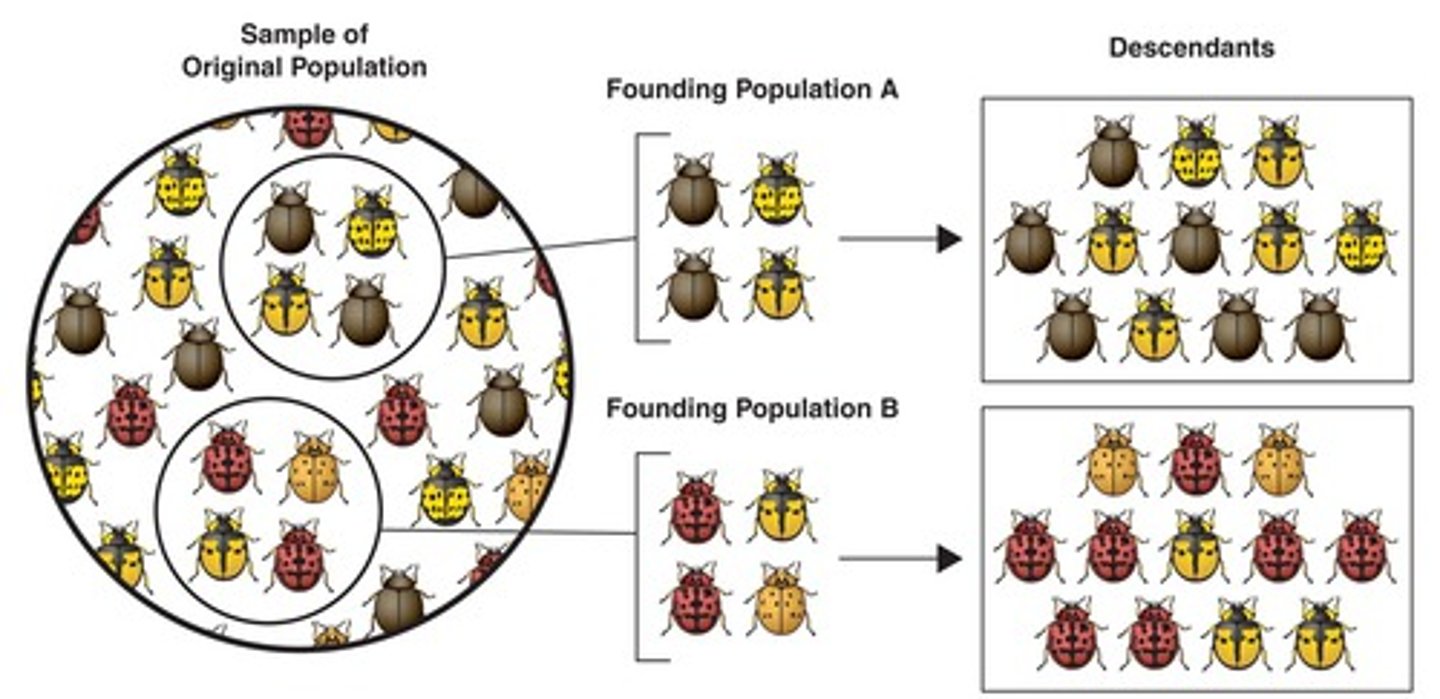
Bottleneck Effect
A change in allele frequency following a dramatic reduction in the size of a population as the result of disaster or disease
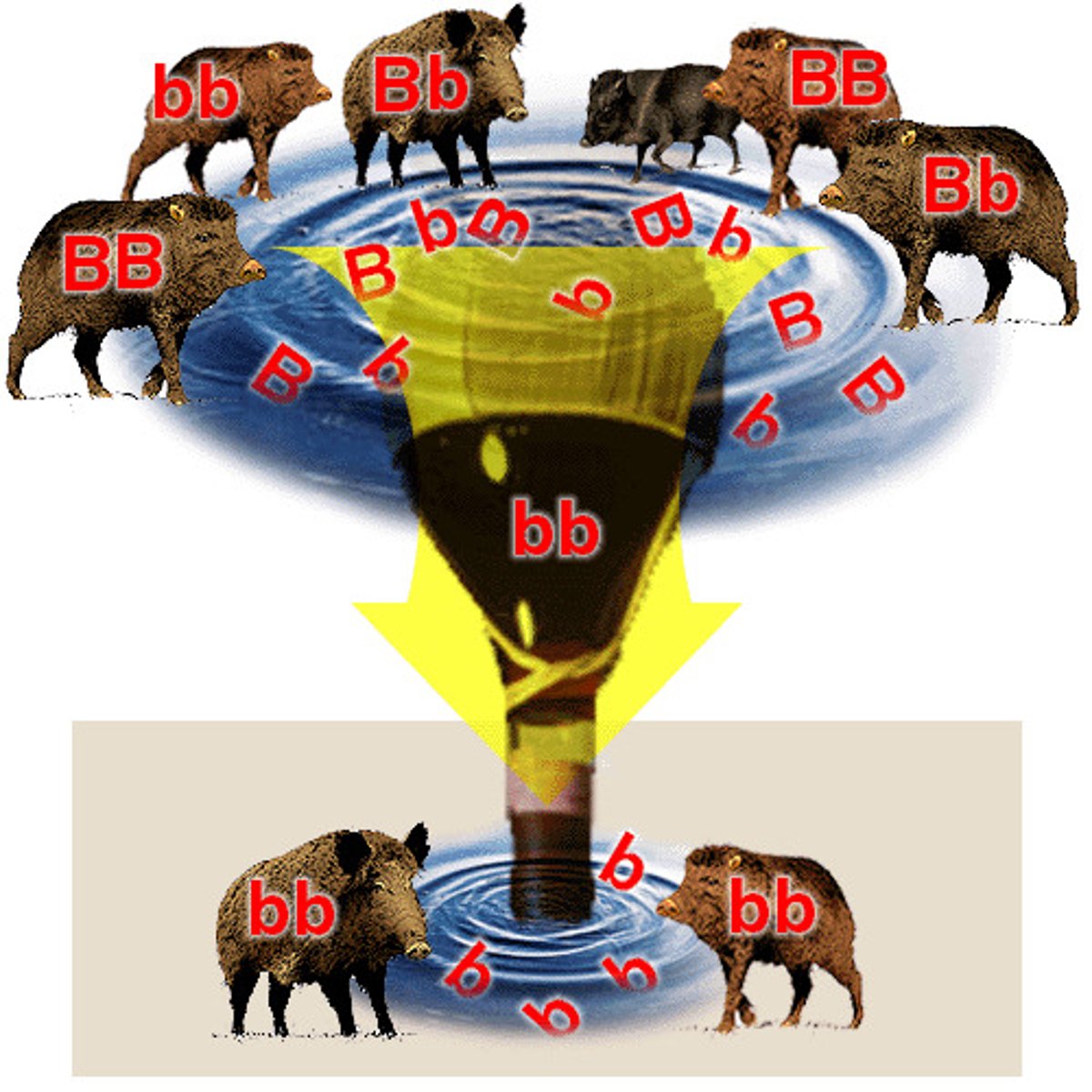
Founder Effect
A change in allele frequency that occurs as a result of the migration of a small subgroup of a population
